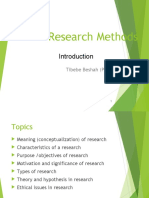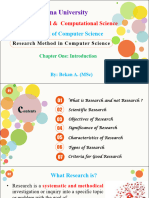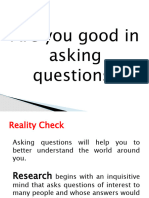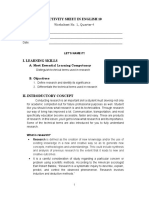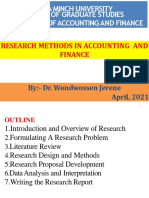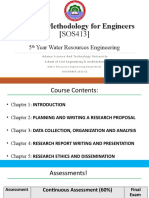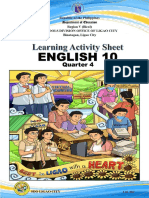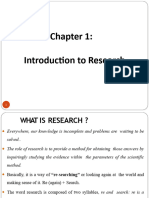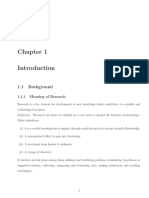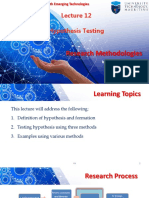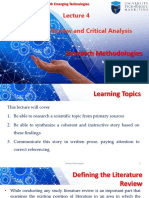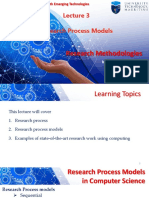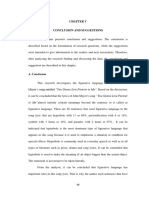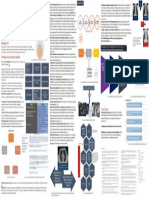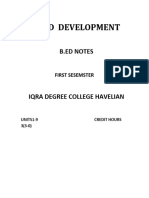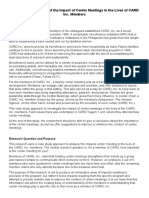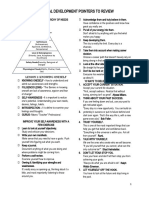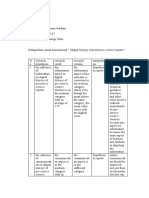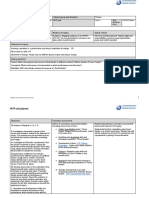0% found this document useful (0 votes)
58 views31 pagesLecture 1 - Overview and Significance
This document provides an overview of a lecture on research methodologies in computer science. It discusses key topics like the definition and significance of research, comparing research and development to product development, research process models, literature reviews, developing research problems, choosing appropriate research methods, designing experiments, presenting findings, and research ethics. The learning outcomes are to understand established research techniques, plan and conduct original research, communicate results clearly to experts and non-experts, and consider research ethics.
Uploaded by
Mohammad Mubeen BANKURCopyright
© © All Rights Reserved
We take content rights seriously. If you suspect this is your content, claim it here.
Available Formats
Download as PDF, TXT or read online on Scribd
0% found this document useful (0 votes)
58 views31 pagesLecture 1 - Overview and Significance
This document provides an overview of a lecture on research methodologies in computer science. It discusses key topics like the definition and significance of research, comparing research and development to product development, research process models, literature reviews, developing research problems, choosing appropriate research methods, designing experiments, presenting findings, and research ethics. The learning outcomes are to understand established research techniques, plan and conduct original research, communicate results clearly to experts and non-experts, and consider research ethics.
Uploaded by
Mohammad Mubeen BANKURCopyright
© © All Rights Reserved
We take content rights seriously. If you suspect this is your content, claim it here.
Available Formats
Download as PDF, TXT or read online on Scribd
/ 31









